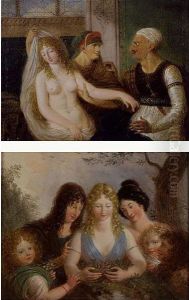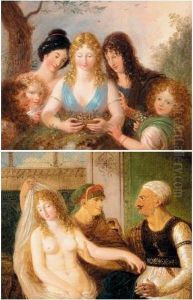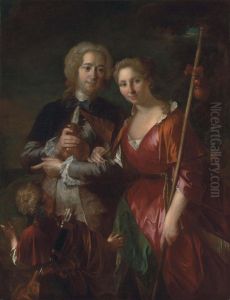Pierre Etienne Le Sueur Paintings
Pierre-Étienne Le Sueur, also known as Pierre Le Sueur, was a French painter whose life and career were primarily anchored in the late 17th and early 18th centuries. Born in 1657, not much is recorded about his early life, including his artistic training. However, it is known that Le Sueur was active in Paris.
Le Sueur's work was influenced by the prevailing artistic movements of his time, particularly the French Baroque, which was characterized by dramatic expressions, grandeur, and a vivid play of light and dark known as chiaroscuro. His works were not as widely recognized as those of his more famous contemporary, Charles Le Brun, who dominated the French art scene at the time.
Despite the shadow cast by more prominent artists, Le Sueur managed to make a name for himself. He was recognized for his skill in painting and his ability to convey religious themes with emotion and depth. Le Sueur's religious paintings contributed to the visual culture of the Catholic Reformation, which sought to use art as a means for religious education and inspiration.
His career included work on decorative schemes for private individuals, but due to the lack of extensive records, the specifics of these projects, including their locations and patrons, are not thoroughly documented. Nonetheless, his paintings that do survive demonstrate a strong grasp of academic painting techniques and the Baroque idiom.
Pierre-Étienne Le Sueur's death occurred in 1716. While not a household name, Le Sueur's contributions to the French Baroque movement remain a part of the rich tapestry of European art history. His works, though not as plentiful or as prominent as those of his peers, continue to be studied for their artistic merits and their representation of the era's aesthetic values and themes.


